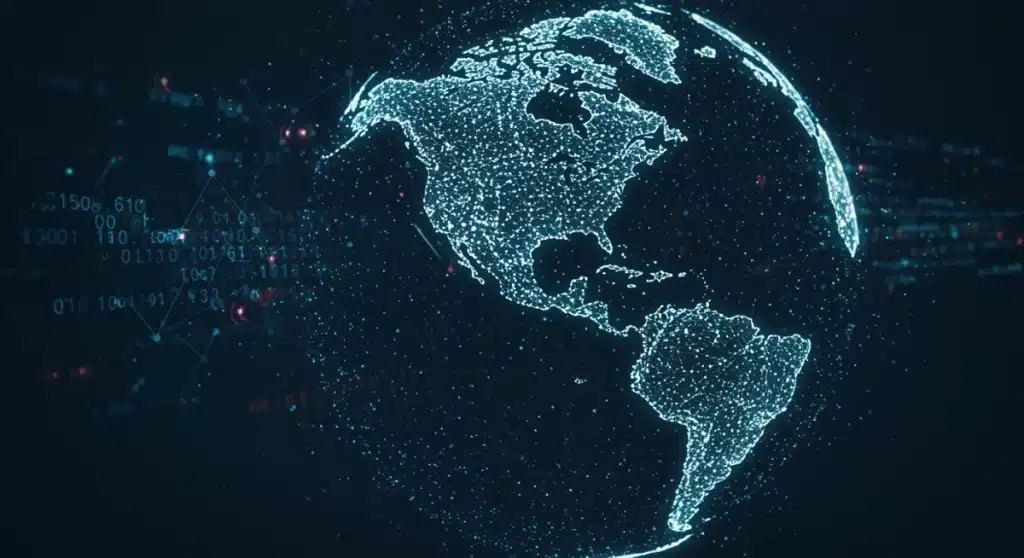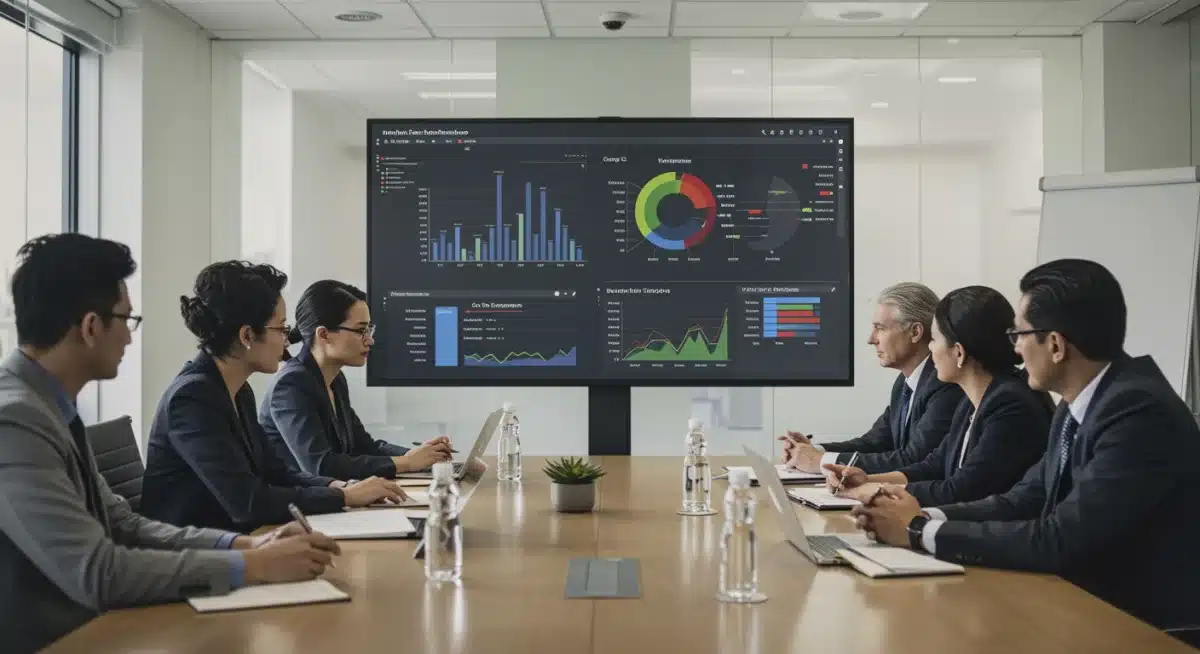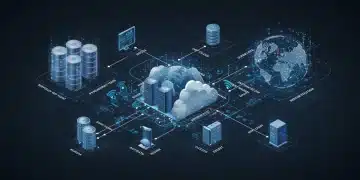ITU Regulations 2025: US Telecom Compliance & Global Impact

The upcoming ITU Regulations for 2025 directly impact US telecom operations, necessitating immediate strategic planning for evolving international standards concerning spectrum allocation, cybersecurity, and data governance.
The **Upcoming ITU Regulations for 2025: A US Perspective on Global Telecommunications Compliance (TIME-SENSITIVE)** are rapidly approaching, marking a critical juncture for telecommunications providers and policymakers in the United States. These forthcoming international rules will reshape how global communications operate, demanding immediate attention and strategic adaptation from all stakeholders.
Understanding the ITU and Its Mandate for 2025
The International Telecommunication Union (ITU), a specialized agency of the United Nations, is the global body responsible for defining international telecommunication standards. Its decisions, particularly those made during World Radiocommunication Conferences (WRCs) and Plenipotentiary Conferences, set the framework for how countries manage their communication infrastructure and services. The 2025 regulations are not merely technical adjustments; they represent a significant step in global digital governance.
These regulations are crafted through extensive negotiations among member states, aiming to ensure the efficient, safe, and interoperable use of information and communication technologies (ICTs) worldwide. For the US, understanding these processes is vital, as domestic policies must align with international agreements to maintain global connectivity and competitiveness.
Key Areas of Focus for ITU 2025
- Spectrum Allocation: Discussions will finalize new frequency bands for 5G, 6G, satellite communications, and other emerging technologies, impacting future wireless services.
- Cybersecurity Protocols: Enhanced international cooperation and standards for network security, data protection, and combating cyber threats are expected to be central themes.
- Digital Inclusion and Accessibility: Initiatives aimed at bridging the digital divide and ensuring equitable access to telecommunications services globally will likely see new directives.
- Data Governance and Cross-Border Data Flows: While not solely an ITU mandate, discussions often touch upon the implications of data localization and international data transfer rules on global networks.
The ITU’s role extends beyond setting technical standards; it fosters international collaboration on issues ranging from emergency telecommunications to climate change mitigation through ICTs. The upcoming regulations will reflect these broader societal and technological shifts, making proactive engagement from the US essential.
Impact on US Telecommunications Infrastructure
The new ITU regulations for 2025 will have profound implications for the physical and digital infrastructure of US telecommunications. Changes in spectrum allocation, for instance, directly affect how mobile carriers plan and deploy their next-generation networks, requiring significant investment and strategic adjustments. This is not just about upgrading equipment but about ensuring compatibility with global standards.
US operators, from major carriers to smaller regional providers, must assess their current infrastructure against these future mandates. Non-compliance could lead to interoperability issues, limitations on international roaming, and potential trade barriers. The challenge lies in balancing national interests with the need for global harmonization, a crucial aspect of the **Upcoming ITU Regulations for 2025: A US Perspective on Global Telecommunications Compliance (TIME-SENSITIVE)**.
Adapting to New Technical Standards
The technical specifications set by the ITU are often adopted by national regulatory bodies, including the Federal Communications Commission (FCC) in the US. These standards dictate everything from radio frequency emissions to network architecture. US telecom companies will need to:
- Update Equipment: Ensure all new and existing network hardware, from base stations to user devices, complies with revised technical parameters.
- Rethink Network Design: Adapt network planning to accommodate new spectrum bands or altered usage rules, impacting coverage, capacity, and service delivery.
- Invest in R&D: Support research and development efforts to innovate within the new regulatory landscape, fostering competitive advantage.
Furthermore, the push for greater energy efficiency and environmental sustainability in ICTs, often driven by ITU recommendations, will also influence infrastructure design. US companies are increasingly expected to integrate green technologies and practices into their operations, aligning with global efforts to combat climate change.
Navigating Cybersecurity and Data Protection Mandates
Cybersecurity and data protection are increasingly critical components of global telecommunications policy, and the 2025 ITU regulations are expected to reinforce this trend. As digital threats evolve in sophistication and scale, international cooperation on security standards becomes paramount. For the US, this means aligning national cybersecurity frameworks with global best practices to protect critical infrastructure and user data.
The ITU provides a platform for member states to share information on threats, coordinate responses, and develop common technical standards for secure communication. The upcoming mandates will likely push for more robust encryption protocols, network resilience measures, and international incident response mechanisms. This collaborative approach is vital for safeguarding the interconnected digital world.
Key Cybersecurity Challenges for US Compliance
US telecom providers face several challenges in meeting new international cybersecurity and data protection mandates. These include:
- Harmonizing Regulations: Reconciling US domestic laws (like HIPAA or CCPA) with international data protection principles, especially concerning cross-border data flows.
- Implementing New Standards: Adopting ITU-recommended security standards for network equipment, software, and operational procedures to enhance overall resilience.
- Threat Intelligence Sharing: Participating in international threat intelligence sharing initiatives to proactively identify and mitigate emerging cyber risks effectively.
The emphasis on data protection also extends to user privacy, with global discussions often focusing on the principles of data minimization, transparency, and user consent. US companies operating internationally must be prepared to demonstrate compliance with a patchwork of national and international regulations, making the **Upcoming ITU Regulations for 2025: A US Perspective on Global Telecommunications Compliance (TIME-SENSITIVE)** a complex but necessary undertaking.
The Role of US Policy and Regulatory Bodies
US policy and regulatory bodies, primarily the Federal Communications Commission (FCC) and the National Telecommunications and Information Administration (NTIA), play a crucial role in shaping and responding to ITU regulations. These agencies represent US interests in international forums, negotiate on behalf of the nation, and ultimately implement the agreed-upon standards domestically. Their strategic engagement is fundamental to ensuring that US technological leadership and economic interests are protected.
The FCC, as the independent agency regulating interstate and international communications by radio, television, wire, satellite, and cable in the US, is tasked with translating ITU decisions into national policy. This often involves intricate rule-making processes, public consultations, and coordination with industry stakeholders. The NTIA, as the President’s principal adviser on telecommunications and information policy, also plays a significant role in developing and advocating for US positions in international discussions.
Preparing for Regulatory Shifts
As the 2025 ITU regulations approach, US regulatory bodies are actively engaging in preparatory work, which includes:
- Stakeholder Consultations: Gathering input from US industries, academic institutions, and public interest groups to inform negotiating positions.
- International Diplomacy: Collaborating with allies and partners to build consensus on key issues and advance US strategic objectives within the ITU.
- Domestic Policy Adjustments: Preparing to update existing regulations or introduce new ones to align with the final ITU agreements, ensuring smooth transitions for US operators.
The effectiveness of the US response to the **Upcoming ITU Regulations for 2025: A US Perspective on Global Telecommunications Compliance (TIME-SENSITIVE)** will largely depend on the agility and foresight of these regulatory bodies. Their ability to anticipate challenges and facilitate industry adaptation will be key to maintaining US competitiveness in the global digital economy.

Economic Implications and Market Competitiveness
The economic implications of the 2025 ITU regulations for the US telecommunications sector are substantial. Compliance with new standards, investment in new infrastructure, and adaptation to evolving market conditions will require significant capital expenditure. However, these challenges also present opportunities for innovation and market expansion, provided US companies are prepared to adapt quickly.
Maintaining global interoperability is not just a technical necessity but an economic imperative. US telecom companies rely heavily on international agreements for seamless cross-border communication, roaming services, and access to global supply chains. Discrepancies between US practices and international standards could lead to increased operational costs, reduced service offerings, and a loss of market share to foreign competitors.
Opportunities and Risks for US Businesses
The **Upcoming ITU Regulations for 2025: A US Perspective on Global Telecommunications Compliance (TIME-SENSITIVE)** present both opportunities and risks:
- Opportunities:
- Innovation: Driving the development of new technologies and services that meet global standards.
- Market Access: Ensuring continued access to international markets for US telecom equipment and services.
- Standardization: Contributing to the development of global standards that can benefit US-led technological advancements.
- Risks:
- Compliance Costs: Significant investments required for infrastructure upgrades and adherence to new regulatory frameworks.
- Competitive Disadvantage: Potential loss of competitiveness if US companies are slow to adapt compared to international rivals.
- Trade Barriers: Risk of non-tariff trade barriers if US products or services do not meet international regulatory requirements.
Successful navigation of these regulations will require close collaboration between government and industry. US businesses need clear guidance from regulatory bodies and consistent advocacy for their interests in international forums to mitigate risks and capitalize on new opportunities. The ability to influence and adapt to these regulations will determine the future economic landscape of the US telecom sector.
Preparing for the Future: A Time-Sensitive Call to Action
As 2025 draws nearer, the time for passive observation of the ITU regulatory landscape is over. For US telecommunications providers, policymakers, and technology developers, proactive engagement and strategic preparation are no longer optional but essential. The **Upcoming ITU Regulations for 2025: A US Perspective on Global Telecommunications Compliance (TIME-SENSITIVE)** demands immediate attention to ensure continued global competitiveness and seamless connectivity.
This preparation involves a multi-faceted approach, encompassing technical assessments, financial planning, and policy advocacy. Companies must begin auditing their current systems for potential compliance gaps, while policymakers need to finalize their negotiating positions and prepare for domestic implementation. The window for influence and adaptation is narrowing, emphasizing the urgency of these actions.
Strategic Steps for US Stakeholders
To effectively prepare for the 2025 ITU regulations, US stakeholders should consider:
- Early Engagement: Actively participate in public consultations and industry working groups related to ITU preparatory meetings.
- Technology Audits: Conduct thorough reviews of current infrastructure and service offerings to identify areas requiring updates for compliance.
- Workforce Training: Invest in training programs to ensure technical staff are proficient in new standards and regulatory requirements.
- Policy Advocacy: Work with government agencies to advocate for US interests and ensure that future regulations support innovation and economic growth.
- Scenario Planning: Develop contingency plans for various regulatory outcomes, including potential shifts in spectrum availability or cybersecurity mandates.
The collective effort of the US telecom ecosystem will determine its success in navigating these complex international waters. By taking decisive action now, the US can ensure that it remains a leader in global telecommunications, adapting to new rules while continuing to drive innovation and provide world-class services.
| Key Point | Brief Description |
|---|---|
| Spectrum Allocation | New frequency bands for 5G, 6G, and satellite services will impact future wireless deployments in the US. |
| Cybersecurity Standards | Enhanced global protocols for network security and data protection will require US alignment and implementation. |
| US Policy Adaptation | FCC and NTIA must translate ITU agreements into domestic policy, affecting US telecom operators directly. |
| Economic Impact | Compliance costs and market competitiveness depend on timely adaptation to new global telecommunications rules. |
Frequently Asked Questions About ITU 2025 Regulations
The ITU is the UN’s specialized agency for ICTs, setting global telecom standards. Its 2025 regulations are critical for the US as they will dictate international norms for spectrum, cybersecurity, and data, directly impacting US domestic telecom operations and global connectivity.
New spectrum allocations will require US providers to adapt network infrastructure, potentially investing in new equipment and redesigning services to utilize updated frequency bands for 5G, 6G, and satellite communications, ensuring global interoperability.
The 2025 regulations are anticipated to introduce more robust international cybersecurity protocols, focusing on network resilience, data protection, and cross-border threat intelligence sharing, which US companies must integrate into their security strategies.
The FCC implements ITU decisions into US domestic law, while the NTIA advises the President on telecom policy and represents US interests in ITU negotiations. Both are crucial for ensuring US alignment and competitiveness in global telecommunications.
US businesses face significant compliance costs for infrastructure upgrades but also opportunities for innovation. Adherence to new global standards is vital for maintaining market access, avoiding trade barriers, and ensuring competitiveness in the international telecom landscape.
What Happens Next
The lead-up to the 2025 ITU Regulations demands continuous monitoring and adaptive strategies from all US stakeholders. Key developments to watch include ongoing preparatory meetings, the finalization of US negotiating positions, and initial discussions on how proposed international standards will integrate with current domestic laws. Businesses should continue engaging with industry associations and regulatory bodies for the latest updates. The global telecommunications landscape is in flux, and staying ahead of these changes is paramount for the US to maintain its leadership and ensure a compliant, competitive future.





